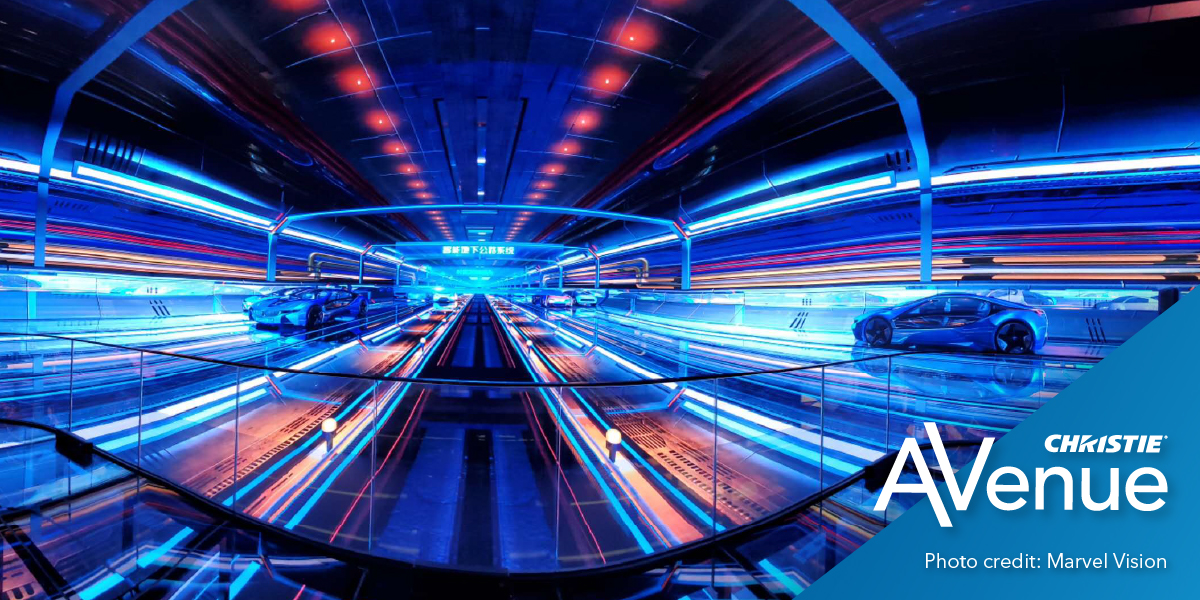Beware of the tigers that live in the CAVEs

“We behave this way in CAVE’s,” says Yiannis Cabolis, director of technology innovation at Electrosonic “or tigers will eat us.”
Unsurprisingly, the technical descriptions of Cave Automatic Virtual Environments understood by industry, entertainment, and government agencies, involve no tigers. CAVEs, they tell us, “are virtual reality (VR) environments consisting of a cube-shaped VR room or a room-sized area in which the walls, ceilings, and sometimes floors are screens. Users may wear VR headsets or heads-up displays and interact through joysticks or data gloves.” So, no tigers. We’ll let Yiannis Cabolis explain where they fit in.
“Four human senses have kept us alive as a species. As babies, the senses of taste and smell let us find our mother’s milk and not eat poisons. But these are secondary to our dominant sense — vision — and our auditory sense — hearing. Senses that primarily evolved to keep us safe from predators and prevent us from being eaten by tigers. And it’s these two senses we selectively and carefully manipulate to make our virtual worlds convincing.”
Stubbornly unbendable
It may be unusual to find a technologist who explains his work in terms of evolutionary biology rather than bit rates and color models. But Yiannis is no ordinary technologist. He says there’s a common misconception about how CAVES and immersive-type virtual experiences like the Christie-equipped Opportunity Pavilion at Expo 2020 Dubai work. That somehow tech — astonishingly capable though it is — can bend the laws of physics to create convincing effects. Those laws, he says, remain stubbornly unbendable.
“We cannot change the laws of physics. However, if we know all the rules, we can select those we can use to manipulate our vision and hearing. Then, and only then, the fusion between the creative intent of experience architects, content creators, technologists integrating various technology platforms, and tech manufacturers like Christie can create magic.”
Yiannis explains that our senses constantly scan for anything that might break that magic spell: an unwanted noise, a clumsy false perspective, a screen bezel. Just in case it’s a hungry tiger looking for lunch. Yiannis must therefore play with our senses, not against them.
“Let’s say I want to change a scene. The easy thing to do would be to create a diversion, but then attention would shift from where I want it to be, and I’d need to pull it back somehow. But using video processing, I can simulate squinting, something our eyes naturally do as we are trying to concentrate. Augment things on the auditory level simultaneously, and your brain says, ‘Something just moved. I better step back!’ Yet I still have your focused attention, and the story’s bubble has not burst.”
A technology chef
Yiannis explains that techniques like these are powerful enough for him to use in crowd management, ‘pulsing’ people from attraction to attraction to prevent overcrowding. He often describes himself as a ‘technology chef,’ selecting and blending from a spice rack of techniques and technologies to achieve his desired result. And the results can indeed be mouthwatering.
“When we make immersive VR presentations, we tell clients their space becomes their canvas. So, space as a canvas is a concept. It is no longer a rectangle; it’s not a shoe box and a dark space with one screen at the end. We can embed technology, measure the ‘people flow’ so we know the right lighting to use, where to direct sound, and which display conditions are right in every individual moment. Only then can I guide the audience, turn their focus to a place where I can make my point, and deliver precisely what you, as a client, need.”
And nobody gets eaten by tigers.






